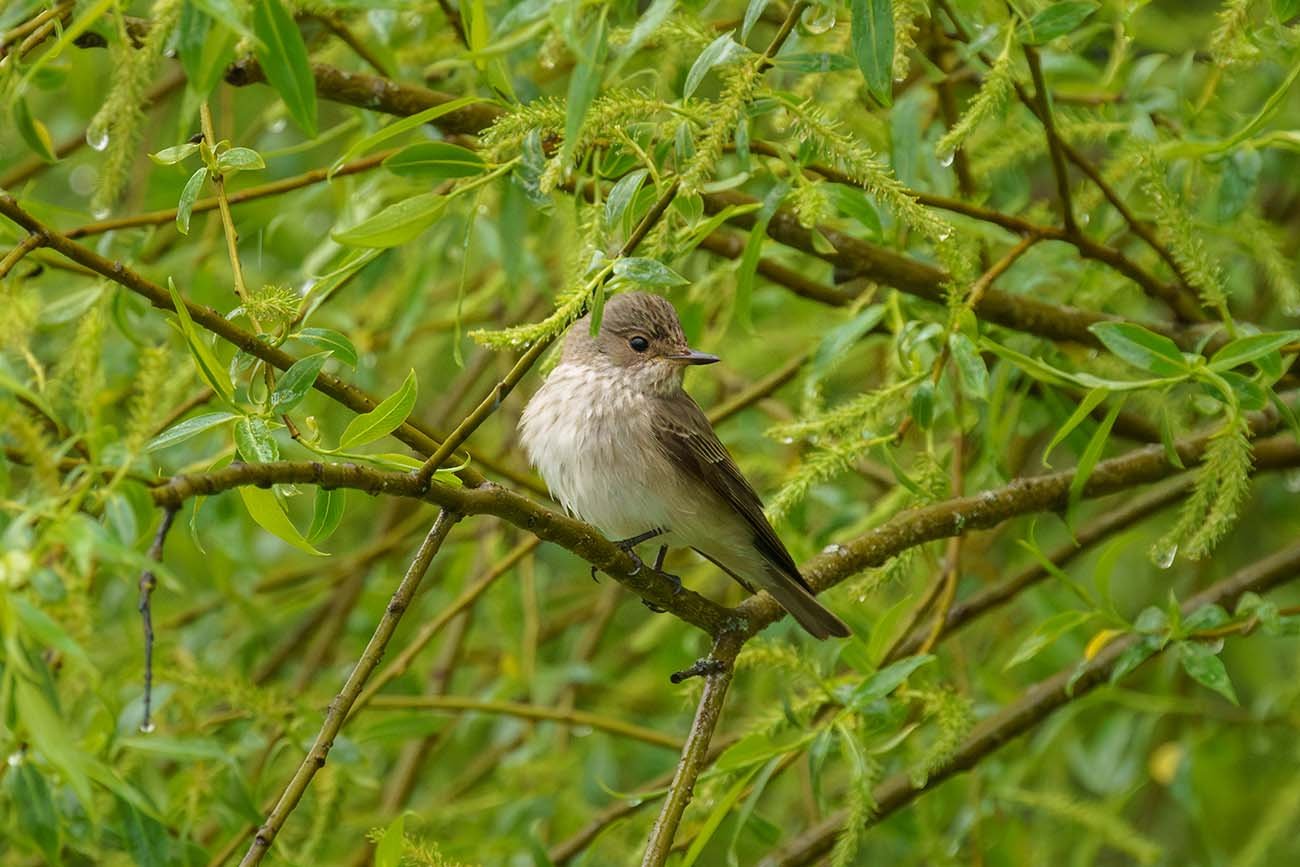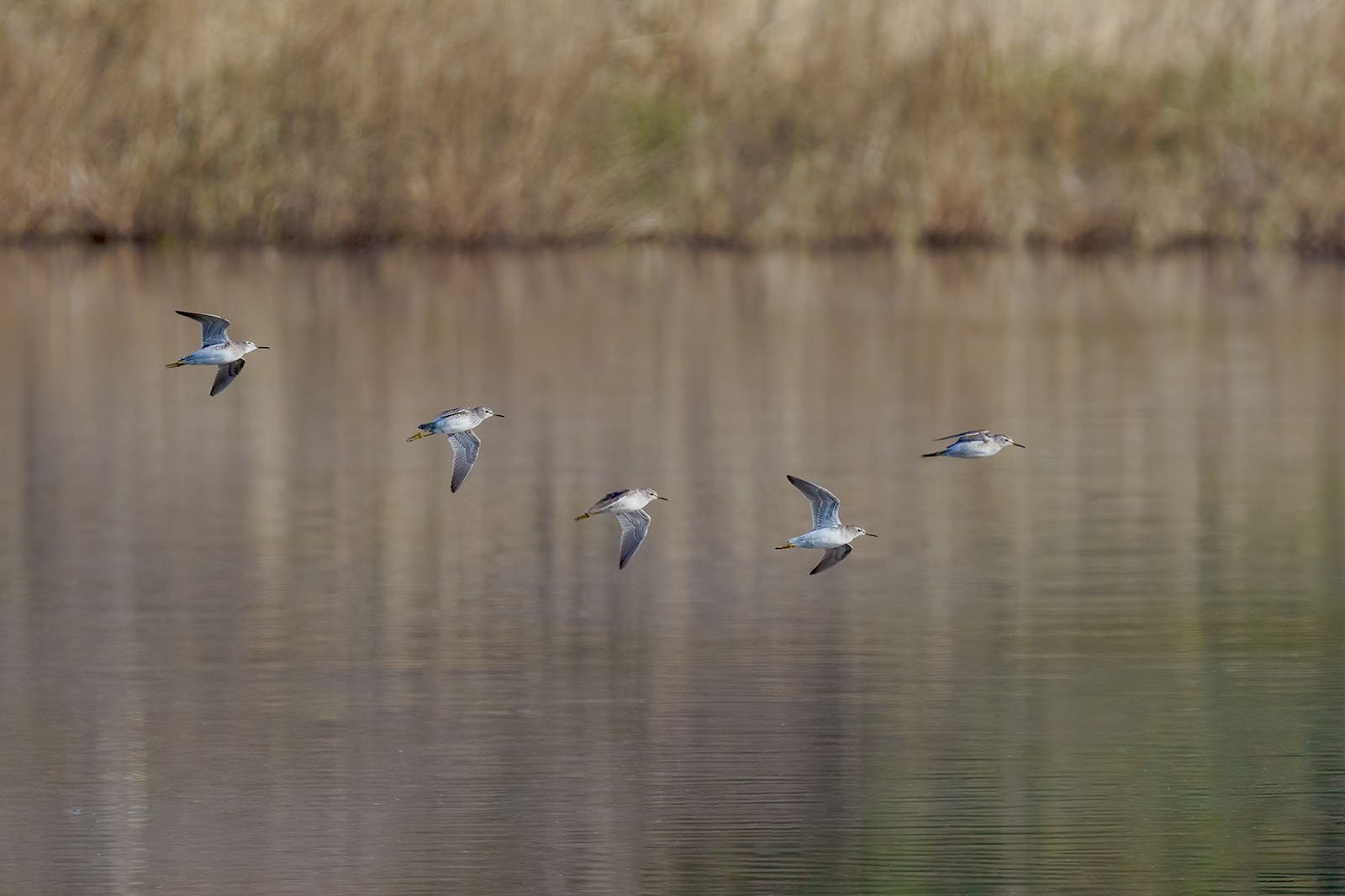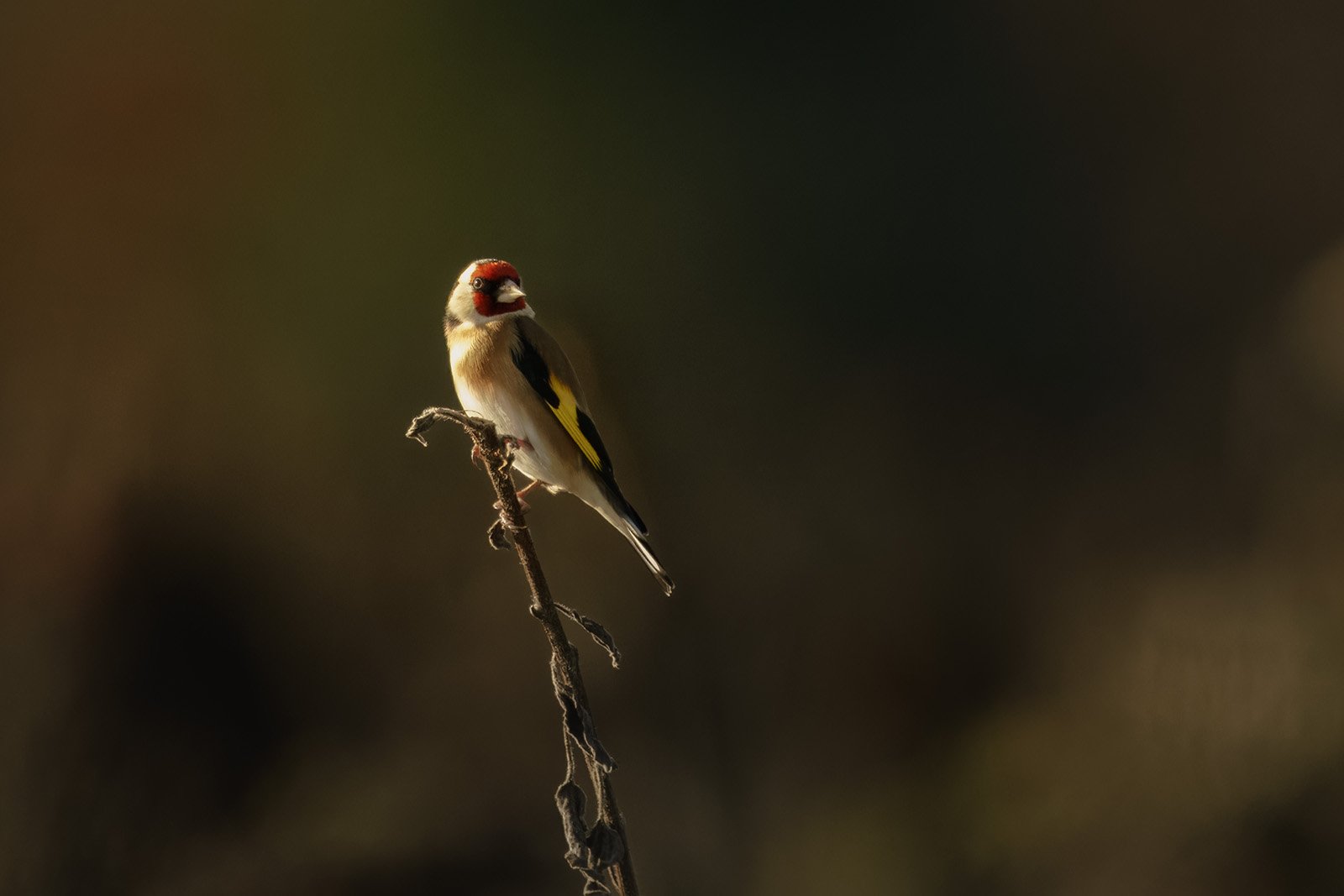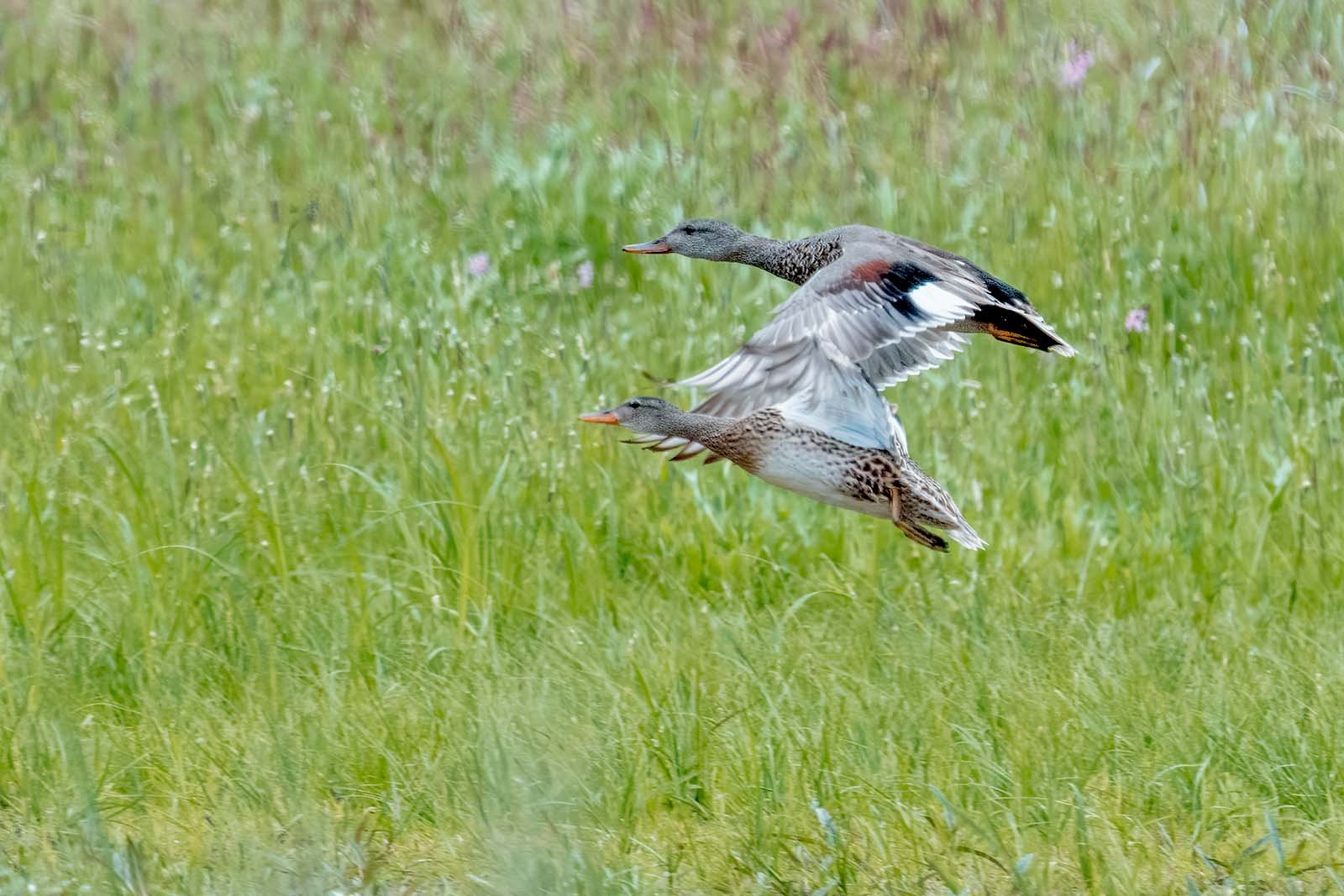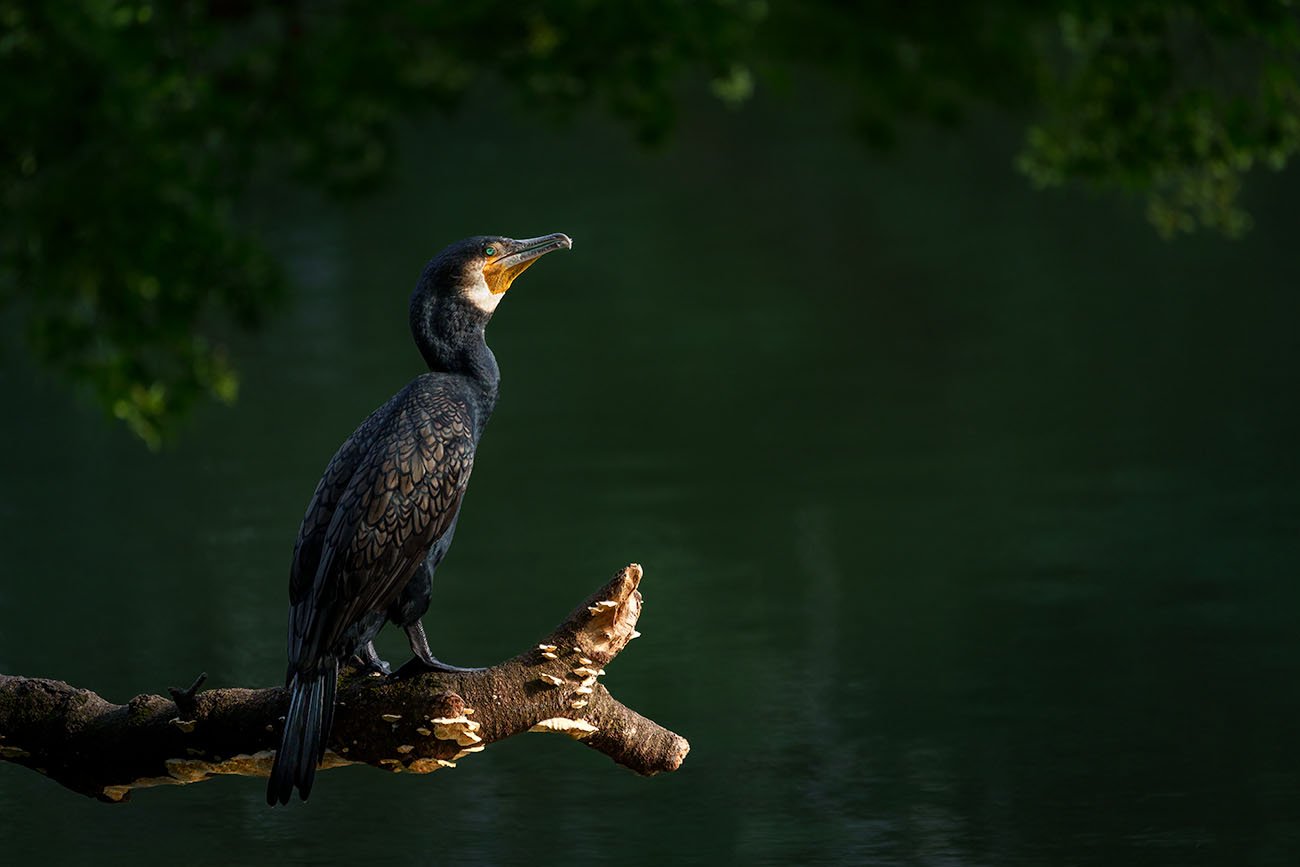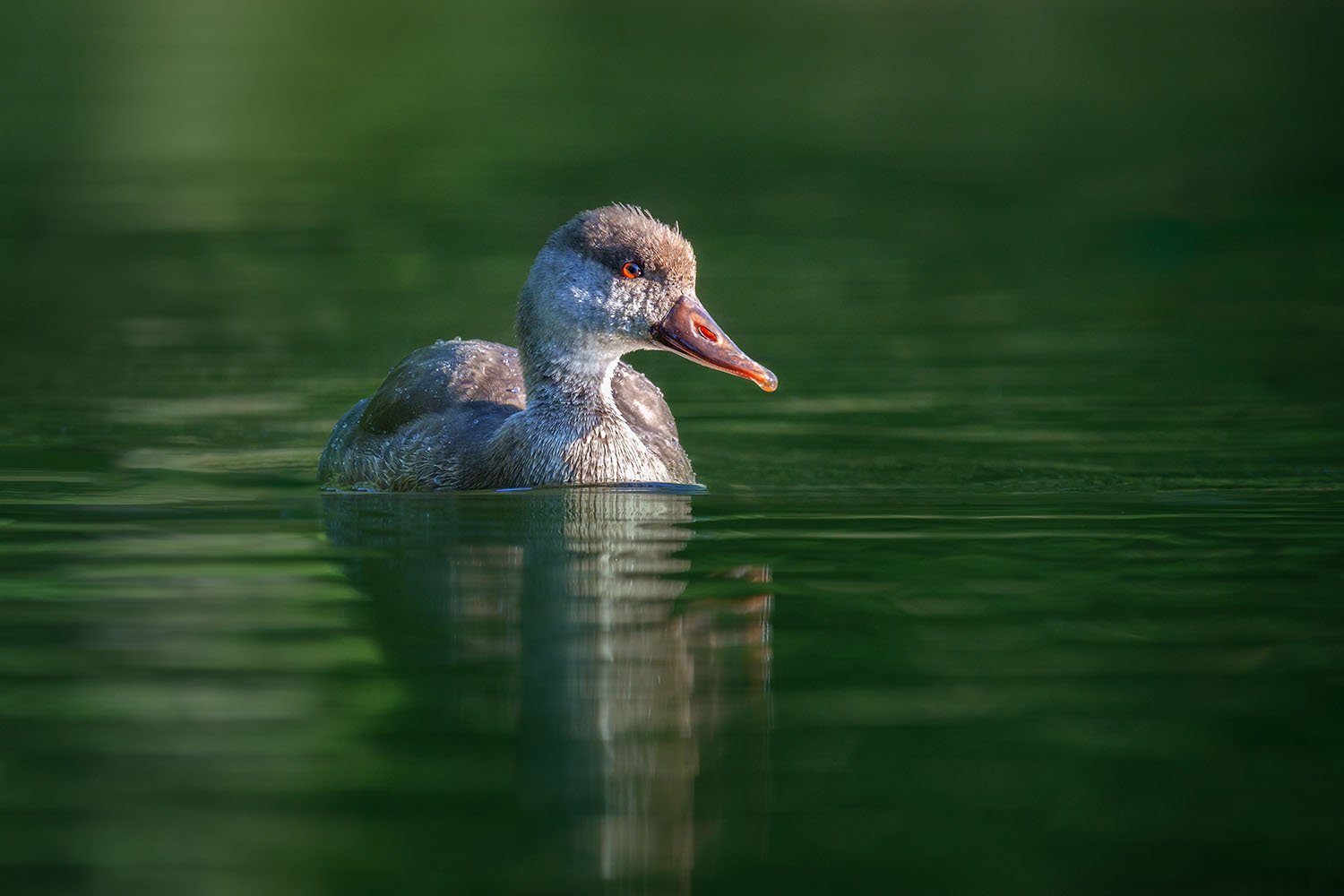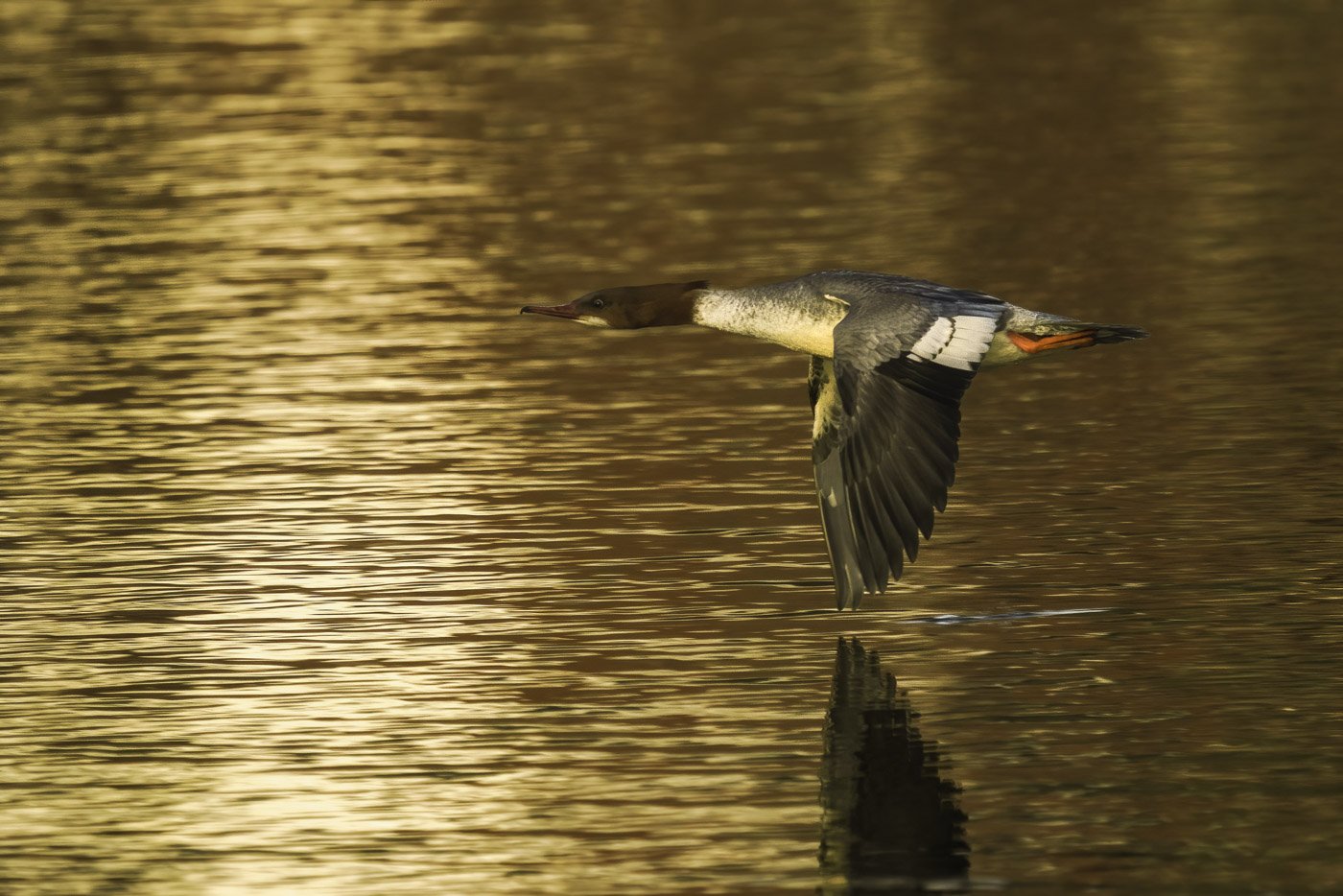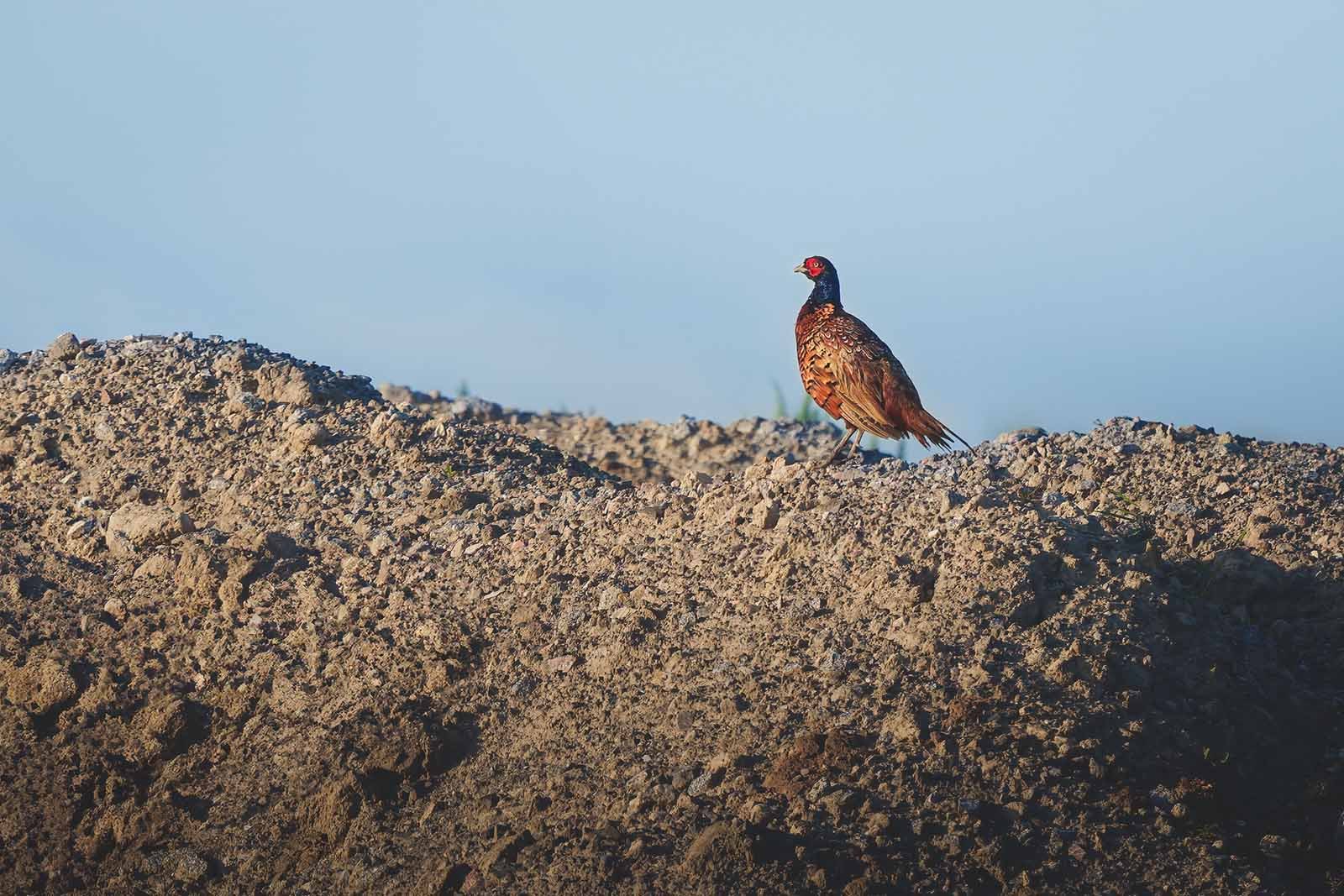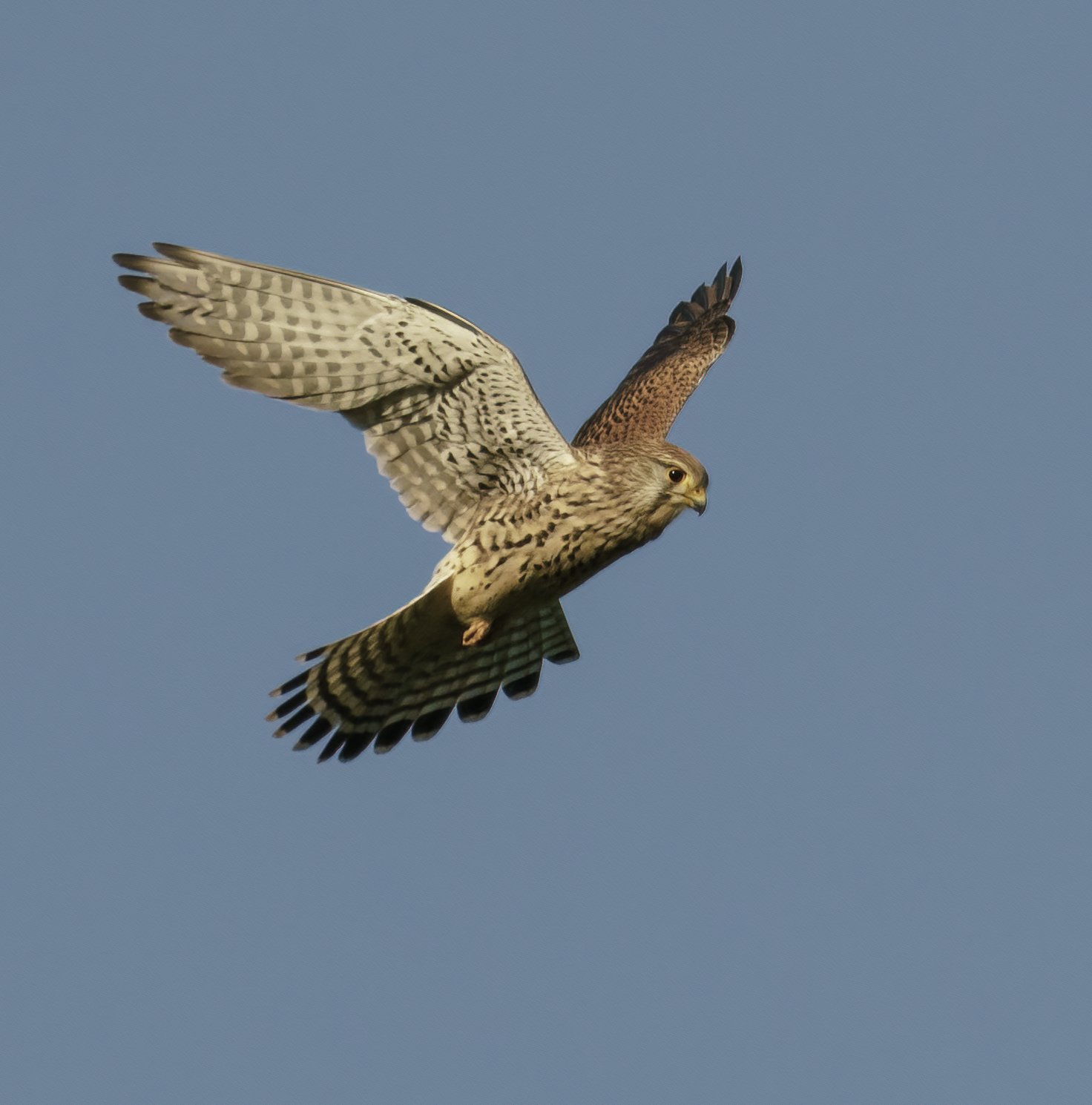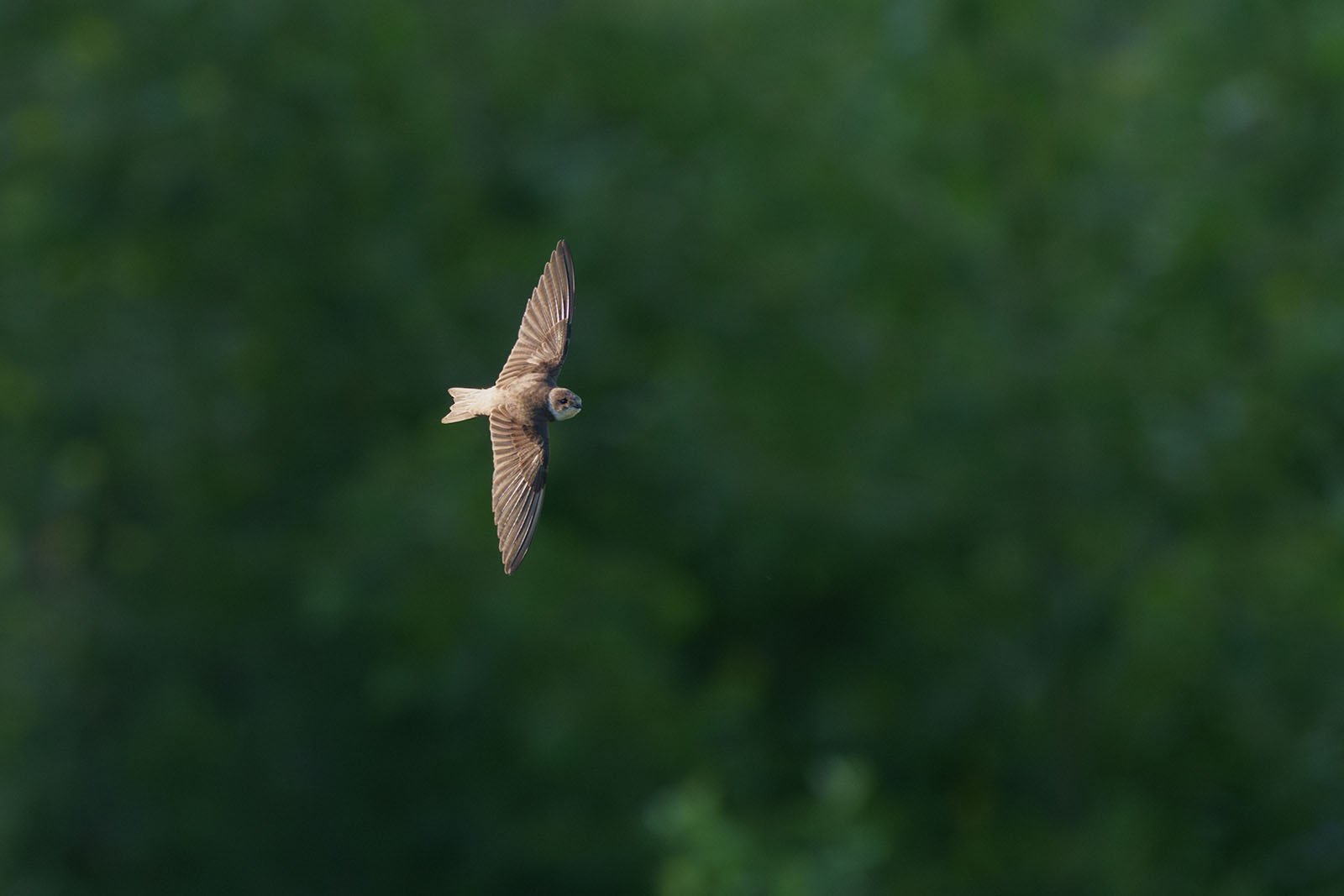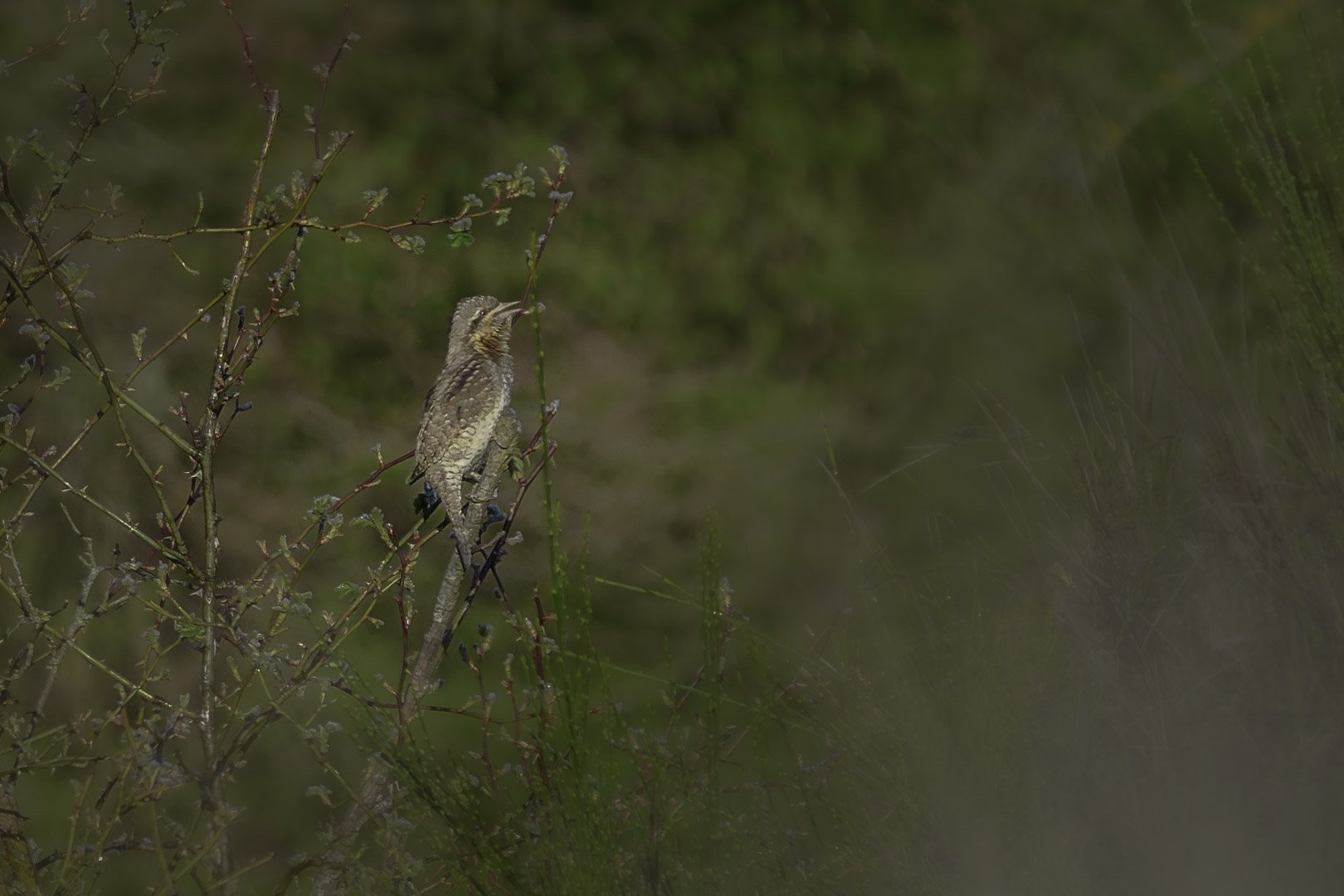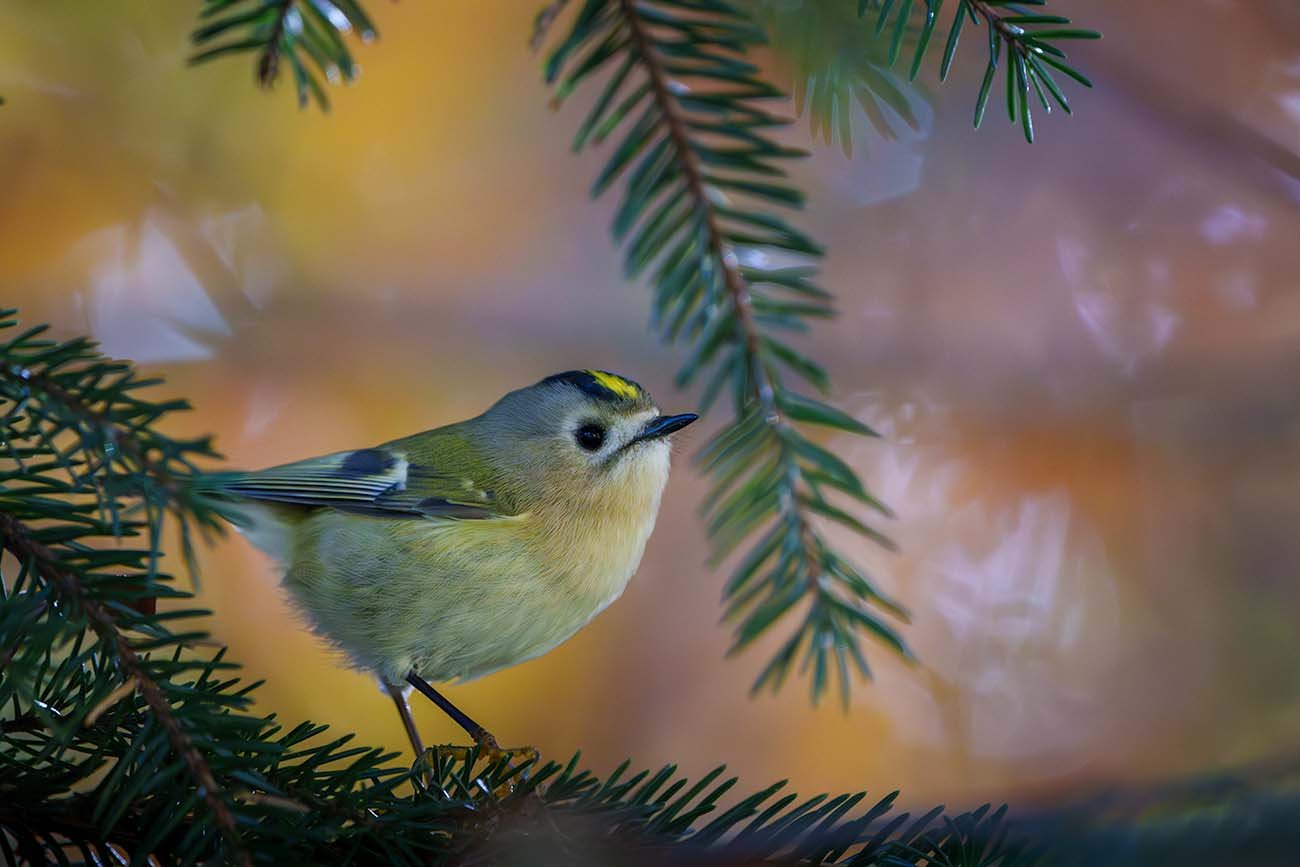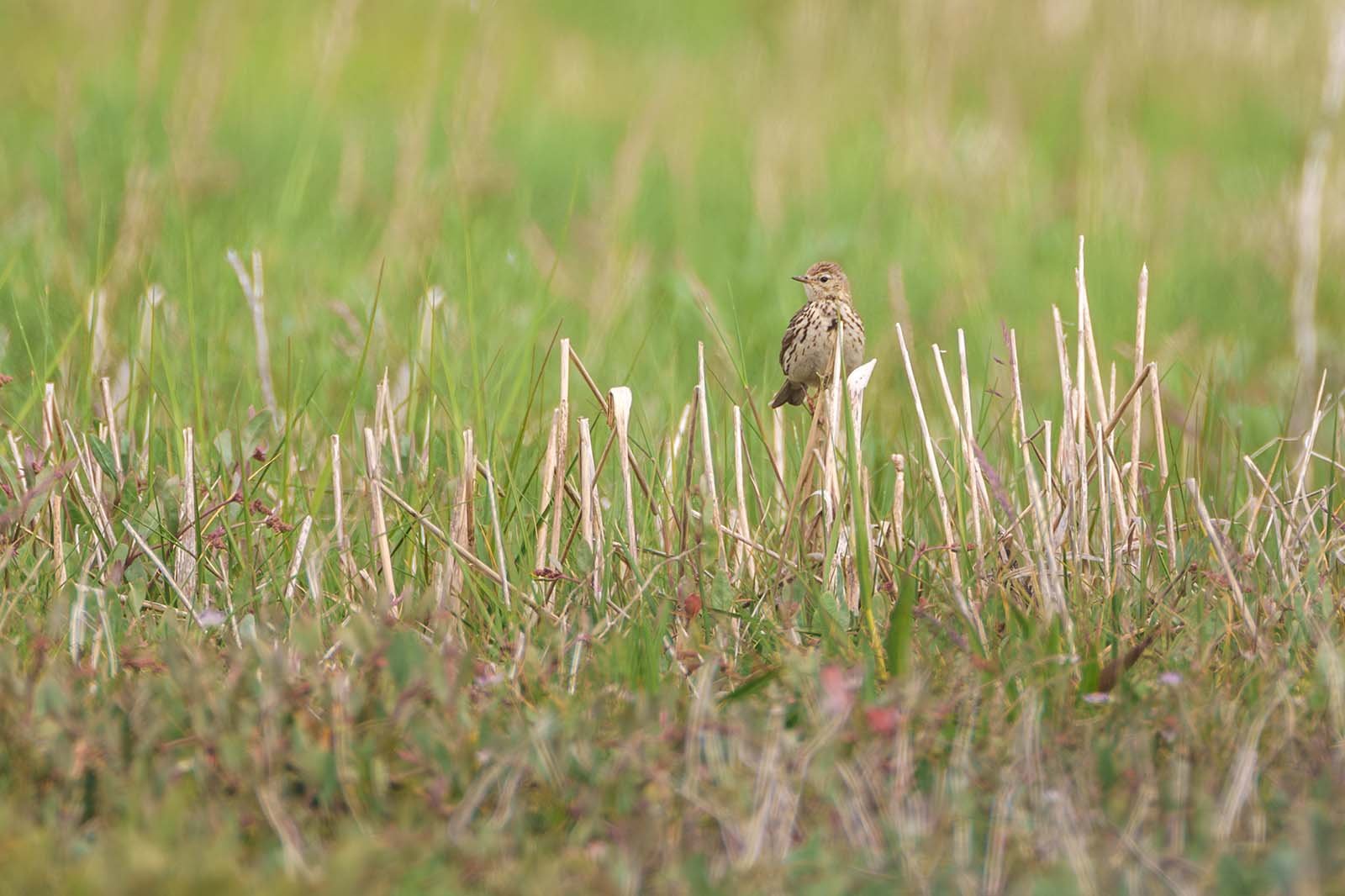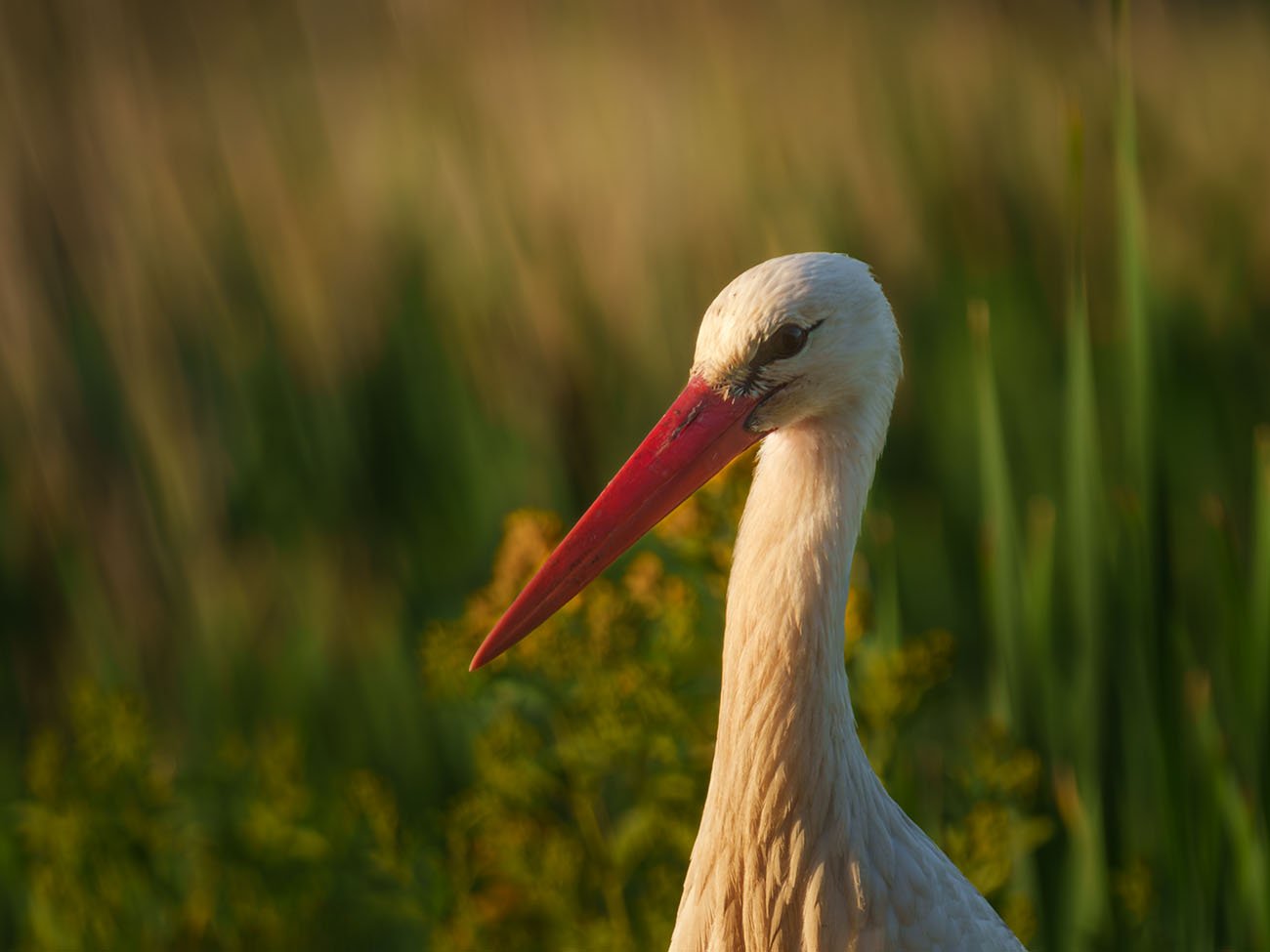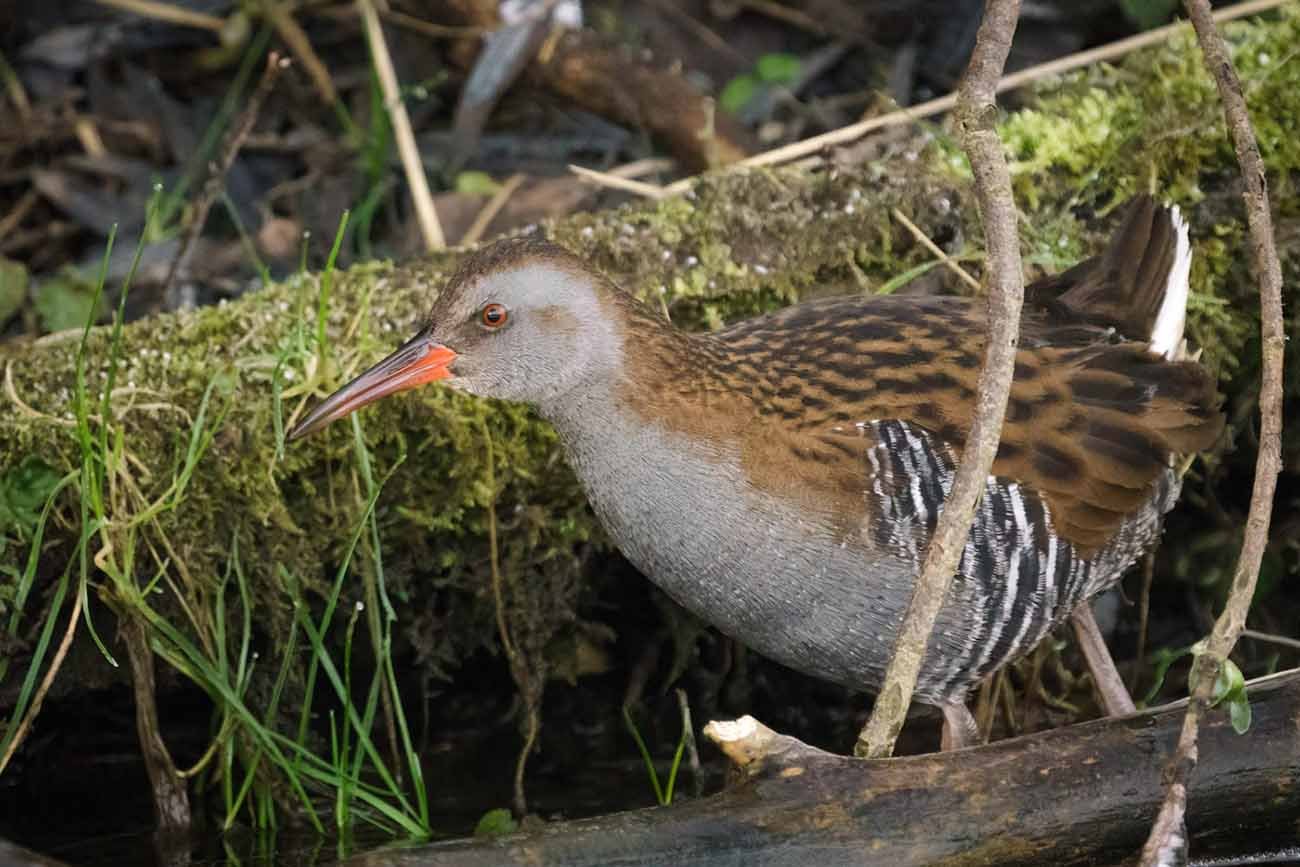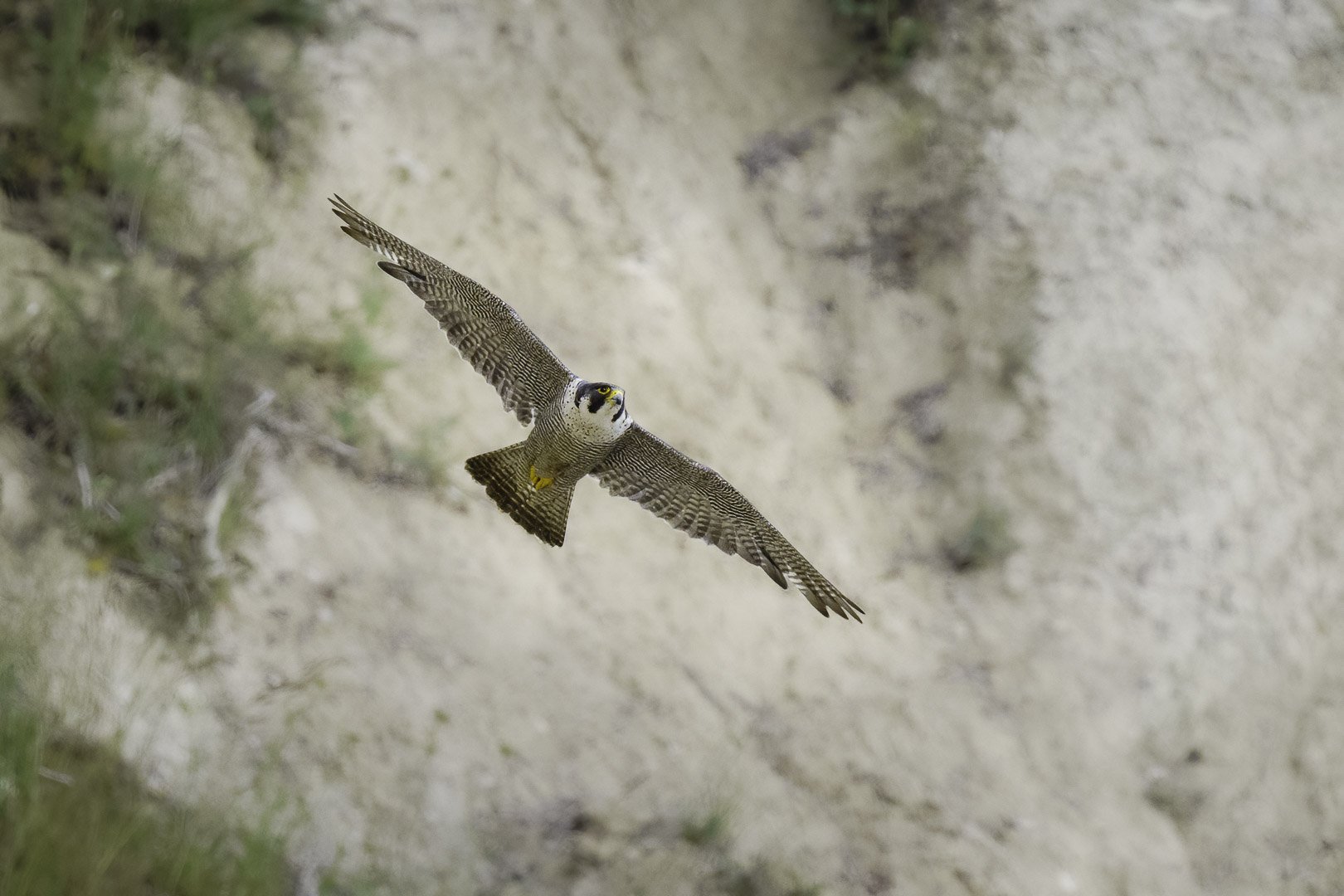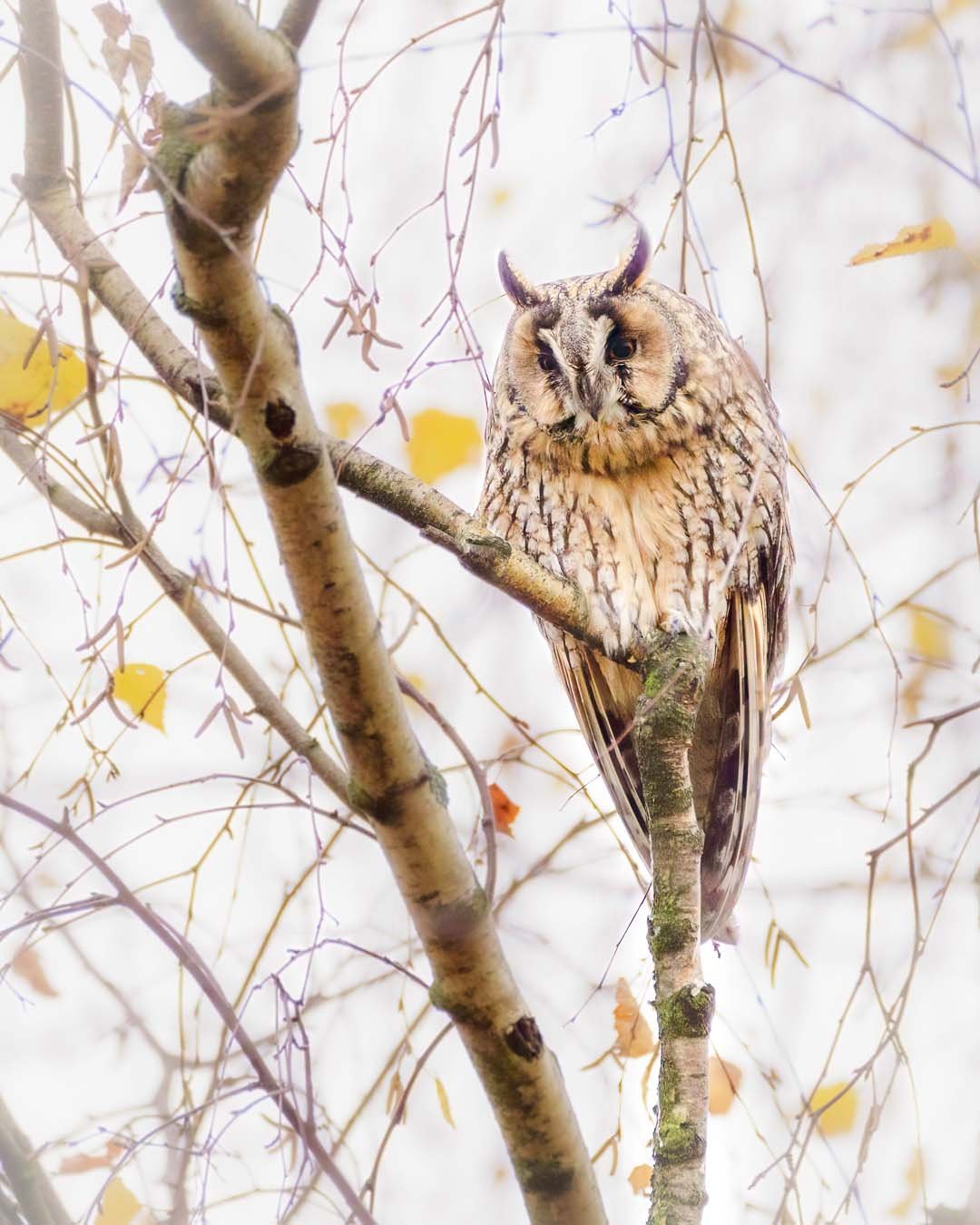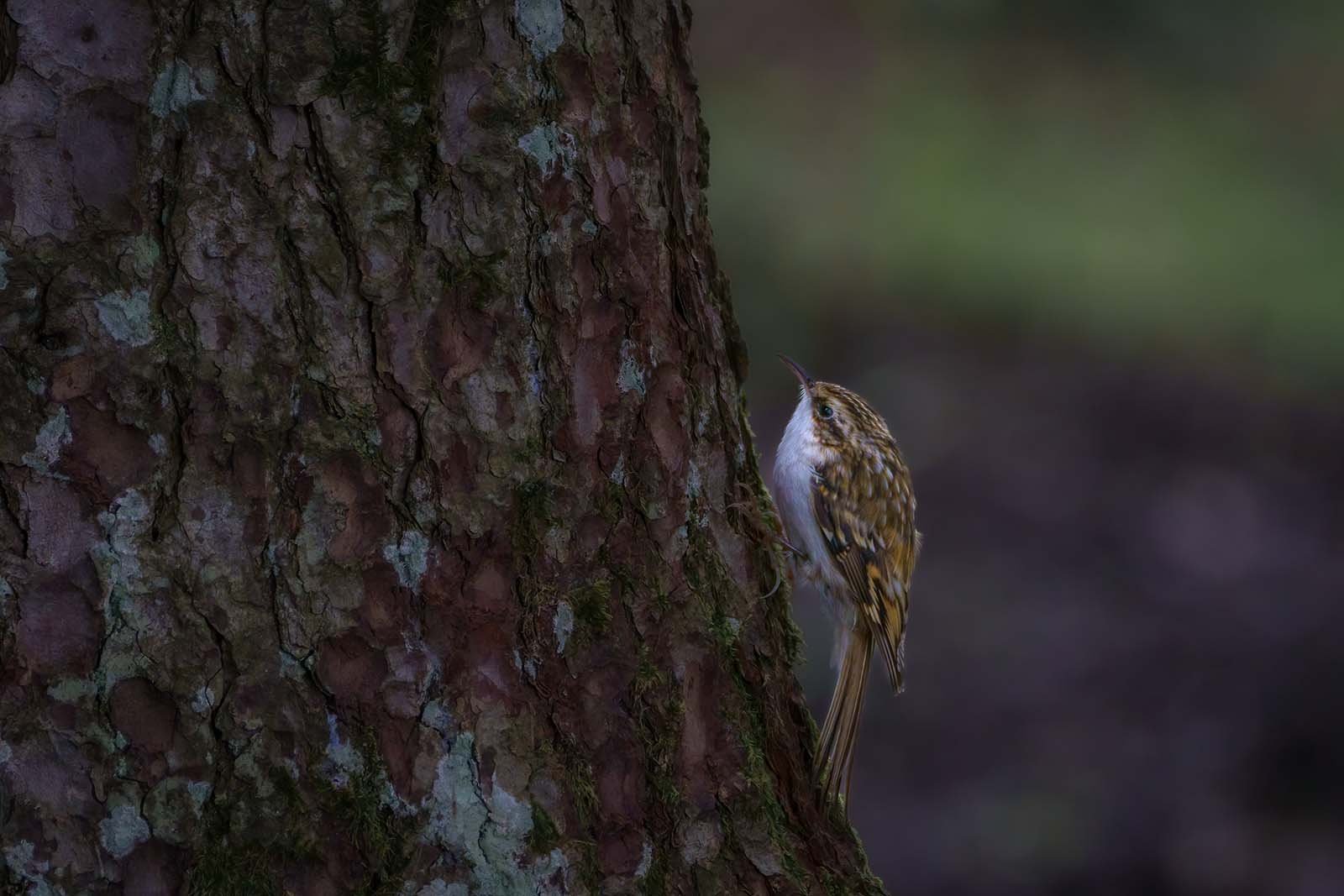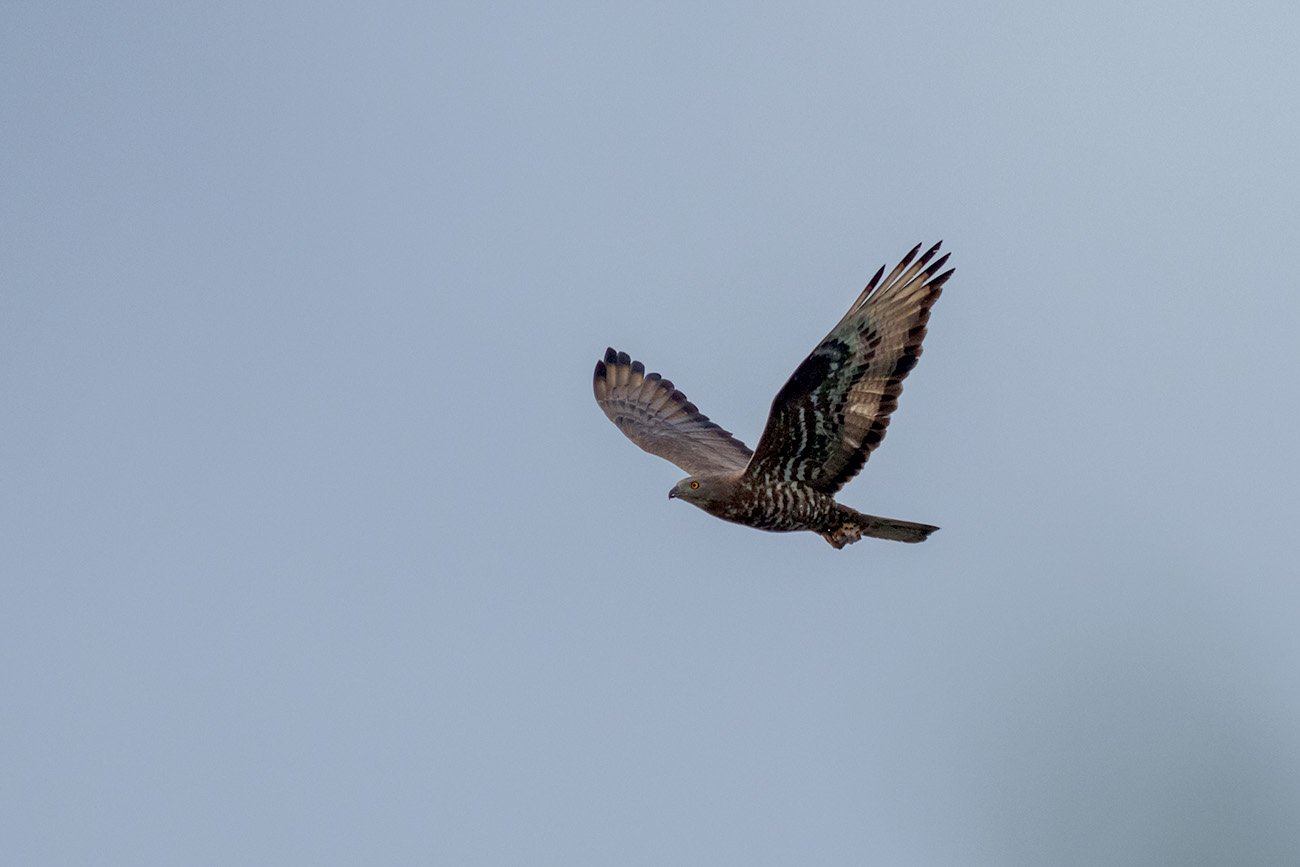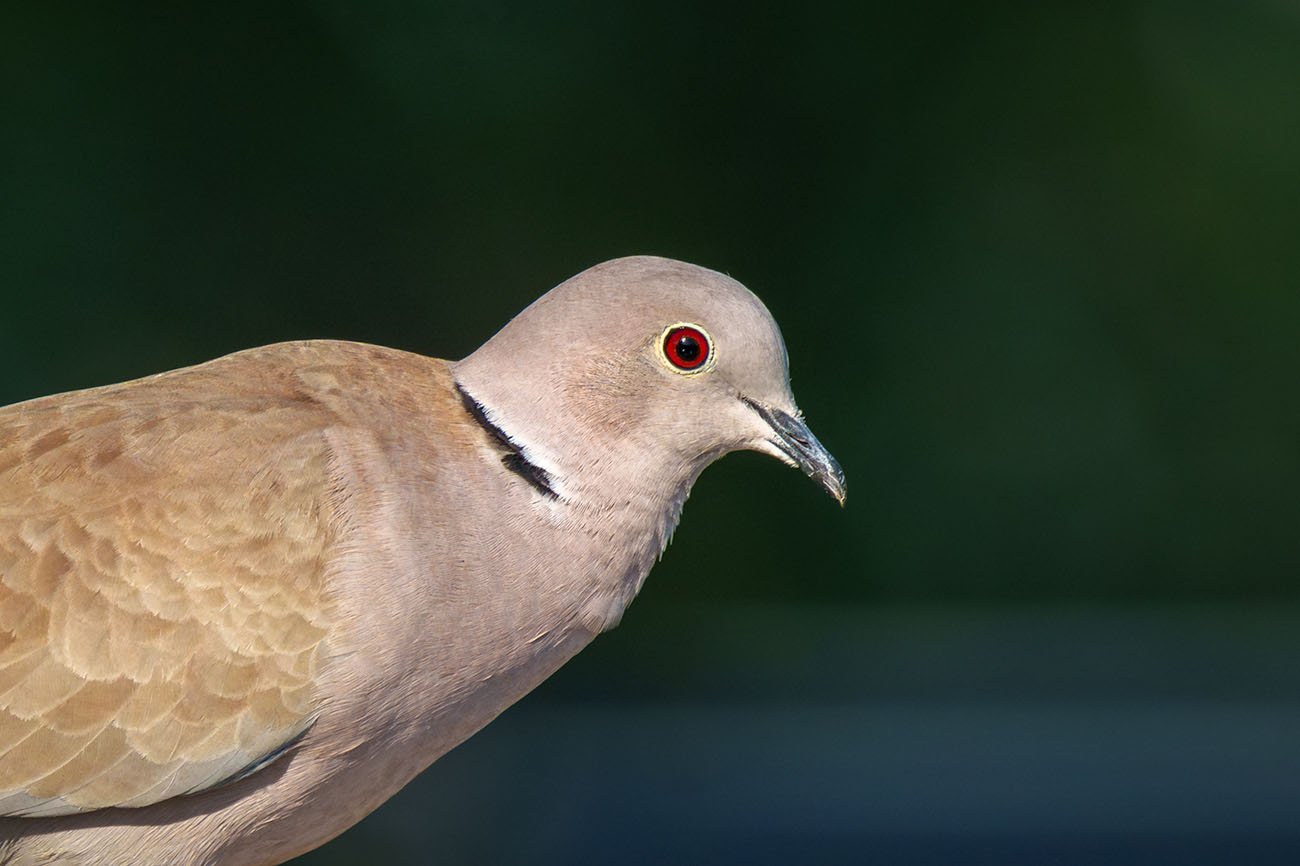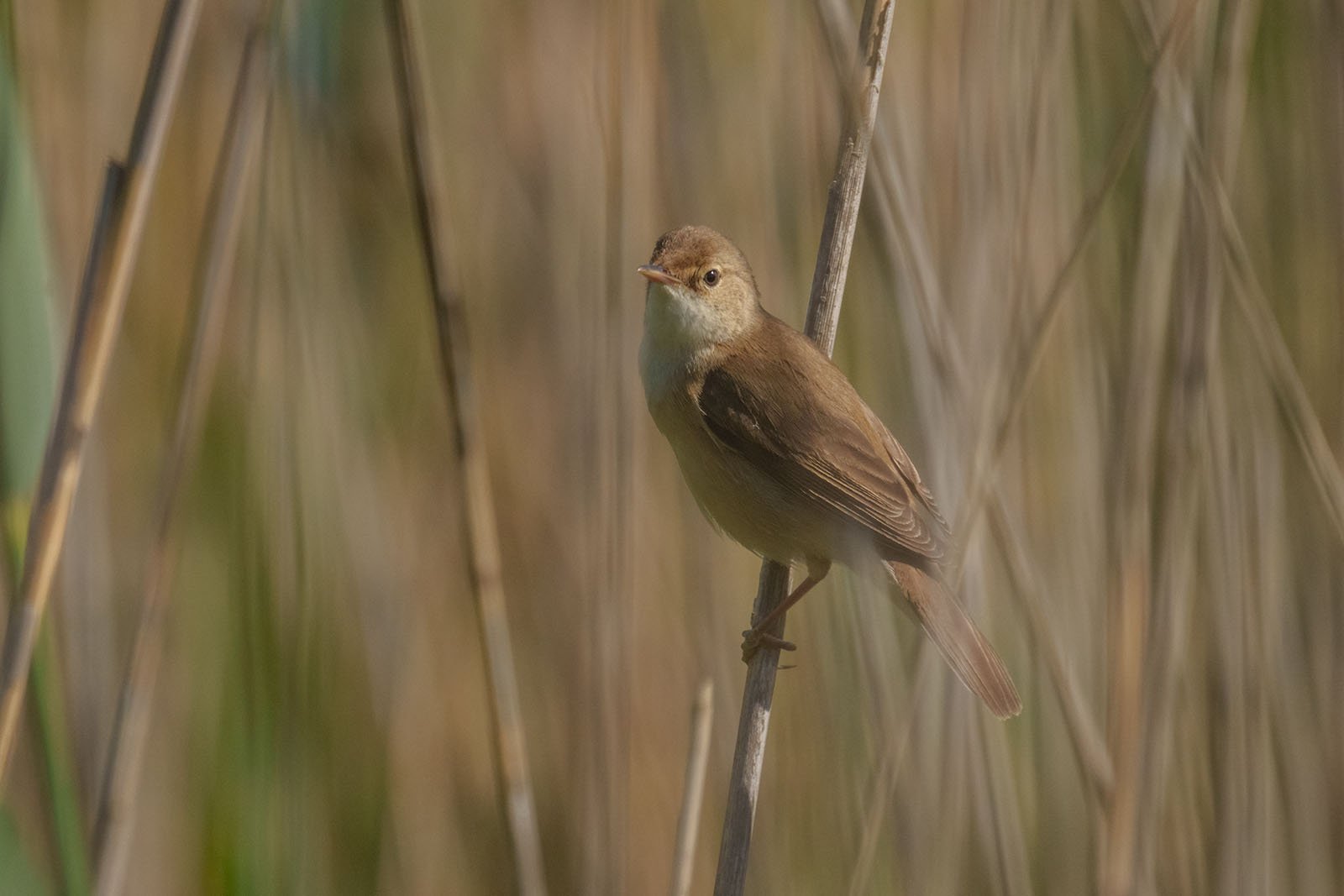Eurasian hobby (Falco subbuteo)
Eurasian hobby (Falco subbuteo) flies in the bright blue sky with spread wings
Key Facts:
- Size: 29–35 cm
- Characteristics: Slim bird of prey, sickle-shaped wings, red under-tail feathers
- Habitat: Open landscapes, prefers areas near forests
- Breeding: Nests in old crow nests
- Diet: Birds and flying insects
The Eurasian Hobby (Falco subbuteo) – A Skilled Aerial Hunter
Table of Contents
- Introduction: The Eurasian Hobby – An Elegant Predator
- Appearance: How to Identify the Eurasian Hobby
- Habitat and Range: Where the Eurasian Hobby Lives
- Behavior and Hunting: A Master of Speed
- Breeding: Raising Chicks in Old Nests
- FAQ: Common Questions About the Eurasian Hobby
- Shortlist – Color Features
1. Introduction: The Eurasian Hobby – An Elegant Predator
The Eurasian Hobby is a fascinating bird of prey known for its speed and agility. Its slim body and curved wings make it look like a swift in flight. Despite being a smaller raptor, the hobby is a powerful hunter, catching birds and flying insects mid-air. This elegant predator is often seen in open landscapes near forests, where it finds plenty of space to hunt.
2. Appearance: How to Identify the Eurasian Hobby
The Eurasian Hobby is about 29 to 35 cm long, with a wingspan of up to 85 cm. The bird’s slate-gray back and reddish "trousers" on its thighs make it easy to recognize. The underside is whitish with dark vertical streaks. One striking feature is the black “mustache” stripe running from its beak down to its neck, giving the hobby a distinctive face.
- Feathers: Slate-gray back, whitish underside with dark streaks, and reddish thighs.
- Beak: Small, black, and sharply curved.
- Eyes: Dark with a bold black mustache stripe.
- Feet: Yellow with strong black talons.
These unique characteristics set the Eurasian Hobby apart from other birds of prey.
3. Habitat and Range: Where the Eurasian Hobby Lives
The Eurasian Hobby prefers open landscapes near forests. These areas offer a good mix of hunting grounds and sheltered nesting sites. You can often spot the hobby gliding over fields and meadows as it hunts for food. During the breeding season, it’s most active in woodland edges, where its calls can be heard as it defends its territory.
In Central Europe, the Eurasian Hobby is widely distributed, but it avoids dense forests and heavily populated urban areas.
4. Behavior and Hunting: A Master of Speed
The Eurasian Hobby is an incredibly fast and agile hunter. Its curved wings allow it to fly at high speeds while performing sharp turns in the air. The hobby often hunts at dusk when insects like dragonflies and beetles are active. It also preys on smaller birds, catching them in mid-flight with impressive precision. In flight, its silhouette is similar to that of a swift, which makes it stand out from other raptors.
One of the most fascinating aspects of the hobby is how it catches and often eats its prey while still in the air—a remarkable display of its hunting skills.
5. Breeding: Raising Chicks in Old Nests
The Eurasian Hobby doesn’t build its own nests. Instead, it uses old crow nests high up in trees. The breeding season starts in May, with the female laying three to four eggs. Both parents take turns incubating the eggs for about four weeks. Once the chicks hatch, both parents work together to feed and protect them until they fledge after about five weeks.
Interestingly, hobbies often stay with the same partner for several years, showing strong pair bonds.
6. FAQ: Common Questions About the Eurasian Hobby
1. Where is the best place to observe the Eurasian Hobby?
You can often see the hobby flying over open fields near forests. It’s most active in the evening when hunting for insects.
2. What does the Eurasian Hobby mainly eat?
Its main diet consists of flying insects like dragonflies and beetles. It also hunts small birds in flight.
3. Why does the hobby’s flight resemble that of a swift?
The hobby’s curved wings and smooth flight patterns make it look similar to a swift when flying.
4. Where does the Eurasian Hobby nest?
It prefers old crow nests high in trees, which provide a secure location for raising its young.
5. How can you easily recognize a Eurasian Hobby?
Look for its reddish “trousers,” slate-gray back, and the bold black mustache stripe on its face.
7. Eurasian Hobby – Color Features
Feathers:
- Upper side: Slate-gray
- Underside: Whitish with dark streaks
- Reddish "trousers" on thighs
Beak:
- Small and black
Eyes:
- Dark with a black mustache stripe
Feet:
- Yellow with black talons
The Eurasian Hobby is a remarkable bird of prey, known not just for its hunting skills but also for its elegant appearance. Whether you are an experienced birdwatcher or just getting started, observing this bird in the wild is a truly rewarding experience.



